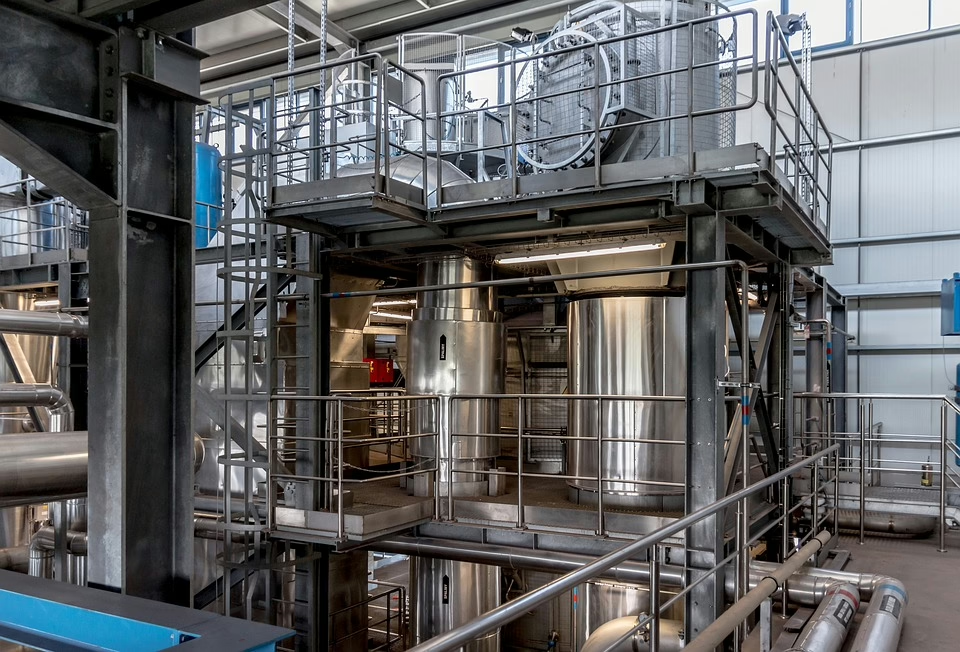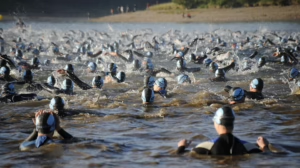Trigger Point Techniques: The Key to Athletic Recovery
Introduction
Athletic performance relies not only on skill and training but also on effective recovery strategies. One method gaining popularity among athletes and physical therapists alike is Trigger Point Therapy. This technique focuses on relieving muscle tension, improving circulation, and accelerating recovery through the identification and treatment of trigger points—areas of tightness in muscles that can lead to pain and dysfunction. This article delves into the principles of trigger point therapy, its benefits for athletic recovery, various techniques, and how athletes can incorporate these practices into their routines.
Understanding Muscle Trigger Points
What Are Trigger Points?
Trigger points, often referred to as “muscle knots,” are localized areas of hyperirritability within muscle tissue. They can be caused by a variety of factors, including muscle overuse, injury, poor posture, or stress. When these points become activated, they can refer pain to other areas of the body, resulting in discomfort and reduced performance.
Types of Trigger Points
-
Active Trigger Points: These are always tender and can produce referred pain even without pressure.
-
Latent Trigger Points: These may not be painful unless pressed, but they can contribute to overall muscle tightness and weakness.
How Trigger Points Affect Athletes
For athletes, trigger points can impede performance and prolong recovery times. They can lead to imbalances in muscle function, affecting movement patterns and increasing the risk of injury. Addressing these areas can enhance performance and ensure a quicker recovery post-exercise.
The Science Behind Trigger Point Therapy
How It Works
Trigger point therapy works primarily by applying pressure to the trigger points, often through manual massage, to release tension and improve blood flow. This pressure can help break down adhesions in the muscle tissue, promoting healing and alleviating pain.
Physiological Effects
-
Increased Blood Flow: Manual pressure can increase circulation, bringing nutrients to the affected area and aiding in the removal of metabolic waste.
-
Reduced Muscle Tension: By targeting trigger points, muscle fibers are stretched and relaxed, which can reduce overall tension.
-
Pain Relief: According to the Gate Control Theory of pain, applying pressure to trigger points can block pain signals from reaching the brain, offering immediate relief.
Benefits of Trigger Point Therapy for Athletes
Injury Prevention
By regularly addressing trigger points, athletes can reduce muscle imbalances and the risk of injuries. Keeping muscles pliable and free from knots enables better performance and lessens the likelihood of strains and sprains.
Enhanced Recovery
After intense training sessions or competitions, trigger point therapy can speed up recovery time. By alleviating muscle soreness and stiffness, athletes can return to their training regimens sooner.
Improved Range of Motion
Releasing trigger points often results in improved flexibility and range of motion. This is crucial for athletes, as enhanced mobility can lead to better performance in their respective sports.
Pain Management
For athletes dealing with chronic pain, trigger point therapy can serve as a valuable tool in their arsenal. It provides an alternative to more invasive treatments, such as injections and medications, which may have side effects.
Techniques for Trigger Point Therapy
Self-Myofascial Release (SMR)
Self-myofascial release is a technique that athletes can perform on their own using tools like foam rollers, massage balls, or massage sticks. This method enables individuals to apply sustained pressure to trigger points effectively.
How to Use Foam Rollers
-
Identify the Area: Locate the muscle group you want to target (e.g., quads, hamstrings, calves).
-
Positioning: Place the roller under the targeted area and use your body weight to apply pressure.
-
Roll Slowly: Move slowly over the muscle, pausing on any tender spots for 20-30 seconds.
-
Breathe: Maintain steady breathing to enhance relaxation and effectiveness.
Manual Release Techniques
For those who can access a certified massage therapist or physiotherapist, manual techniques can be especially beneficial.
Trigger Point Release
-
Locate the Trigger Point: Using the fingertips, apply pressure to the tender area.
-
Sustain Pressure: Hold the pressure for 20-30 seconds until you feel a “release.”
-
Movement: After releasing, move the affected muscle through its range of motion to promote flexibility.
Sports Massage
Sports massage integrates various techniques, including trigger point therapy, to enhance recovery and performance. Sessions typically include:
-
Effleurage: Light strokes to warm up the muscle.
-
Petrissage: Kneading movements that target deeper tissue.
-
Friction: Techniques focused on specific trigger points.
-
Stretching: Gentle stretching incorporated to improve flexibility.
Stretching and Strengthening Post-Therapy
Incorporating stretching and strengthening exercises following trigger point therapy can further enhance recovery. Stretching the affected muscle helps maintain flexibility, while strengthening adjacent muscles can promote overall balance and function.
Incorporating Trigger Point Techniques into Training Regimens
Pre-Workout Routine
-
Warm-Up: Use foam rollers or self-massage techniques to release tightness and prepare muscles for training.
-
Dynamic Stretching: Incorporate dynamic movements to enhance blood flow and mobility.
Post-Workout Recovery
-
Cool Down: After training, use foam rollers to target any tight areas, focusing on active trigger points.
-
Hydration and Nutrition: Supplement recovery techniques with proper hydration and post-workout nutrition.
-
Rest and Recovery: Allow for adequate rest days to enable muscle repair and growth.
Regular Assessment
Athletes should regularly assess their bodies for any developing trigger points. Keeping track of muscle tightness or discomfort can make it easier to address issues before they lead to more significant problems.
Case Studies: Athletes and Trigger Point Therapy
Numerous athletes have successfully used trigger point therapy as part of their recovery strategy. Here are two notable examples:
Case Study 1: Elite Marathon Runner
An elite marathon runner faced chronic hamstring tightness that hindered performance. Through consistent trigger point therapy, both self-administered and professionally done, the athlete was able to release tension in the hamstrings and improve overall flexibility. This led to a reduction in injury frequency and an improvement in race times.
Case Study 2: Professional Soccer Player
A professional soccer player struggled with recurring knee pain due to tight quadriceps. After incorporating trigger point techniques, including regular massage therapy and SMR with foam rollers, the athlete noticed a significant reduction in knee pain and an increased capacity for high-intensity training.
Challenges and Limitations
Knowledge and Skill Gaps
One challenge with trigger point therapy lies in the understanding of muscle anatomy and the identification of trigger points. Athletes may benefit from seeking guidance from trained professionals initially to ensure effective treatment.
Potential Discomfort
Trigger point therapy can be uncomfortable, especially for those new to the practice. It’s essential to communicate discomfort levels during treatment to tailor the pressure to individual needs.
Not a Standalone Solution
While effective, trigger point therapy should be viewed as one part of a comprehensive recovery plan. Other modalities, such as nutrition, hydration, sleep, and overall training strategies, are also vital for optimal performance.
Conclusion
Trigger point techniques play a crucial role in athletic recovery, helping athletes prevent injuries, enhance performance, and recover more quickly after exertion. By understanding and addressing trigger points, athletes can maintain muscle health, boost their performance levels, and extend their competitive careers. Incorporating trigger point therapy into regular training regimens, whether through self-myofascial release, manual therapy, or sports massage, empowers athletes to take charge of their recovery and well-being. As the understanding of muscle functionality continues to evolve, so does the potential for trigger point therapy to transform athletic performance holistically.
References
-
Lewit, K. (2002). Manipulative Therapy in Rehabilitation of the Locomotor System. London: Churchill Livingstone.
-
Myofascial Release: A Practical Guide for Physical Therapists. (2015).
-
Travell, J.G., & Simons, D.G. (1999). Myofascial Pain and Dysfunction: The Trigger Point Manual. Baltimore: Lippincott Williams & Wilkins.
-
Cummings, T.M., & White, A.R. (2007). A Systematic Review of the Effects of Myofascial Release on Pain and Disability. Journal of Bodywork & Movement Therapies.
-
Calanchini, J. (2016). “The Role of Myofascial Release in Recovery from Athletic Injury.” Sports Medicine.
-
Wilke, J., et al. (2016). “A Novel Approach to Muscle Recovery: Trigger Point Therapy.” Journal of Sports Science & Medicine.
-
Harden, N., & Dworkin, R. (2009). “Myofascial Trigger Points: Pathophysiology and Management.” Pain Medicine.
By using the insights from this article, athletes can better navigate their recovery processes and make informed decisions regarding their training and rehabilitation routines.


























Add Comment